Discover Trondheim through these fascinating facts that explore its Viking origins, medieval wonders, and modern achievements, revealing why this central Norwegian city is a hub both of history and innovation.
As the former Viking capital of Norway, Trondheim holds a wealth of stories, from its medieval cathedral to its modern-day reputation as a hub of technology and education.
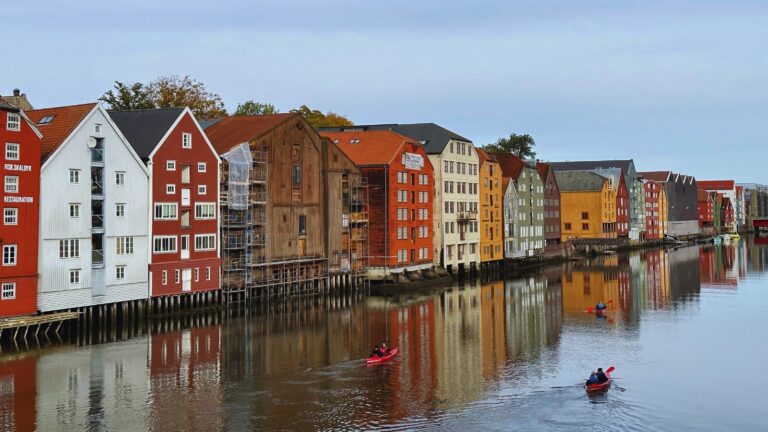
Having written many of these style of articles including the epic fun facts about Norway article, I felt it time to turn my attention much closer to home!
Whether you're drawn to its rich heritage, stunning landscapes, or dynamic student culture, Trondheim offers something for everyone. Let's uncover some captivating facts about this remarkable city!
Historical facts about Trondheim
1. A city over a Millennium old. Trondheim was founded in the year 997 by Viking King Olav Tryggvason as a strategic trading post. Its location at the mouth of the Nidelva River and the Trondheimfjord made it a vital hub for commerce and governance.
However, the region's human history stretches even further back, with prehistoric rock carvings in the area showing signs of settlement for thousands of years.
2. The city’s founder was a Viking King. As the seat of Viking kings, Trondheim served as Norway's capital during much of the early Middle Ages.
The city's founder, Olav Tryggvason, is remembered as a key figure in bringing Christianity to Norway. Today, his legacy is immortalized in the towering Olav Tryggvason statue at the city’s central square.
3. Trondheim's original name was Nidaros. Named after the Nidelva river, the city was also known as Kaupangr í Þróndheimi (“the city in Trondheim/Trøndelag”).

During the Middle Ages, people began to use Þróndheimi—becoming Trondhjem—a spelling that you still see to this day. Nidaros remains in use as the name of a diocese in the Lutheran Church of Norway, and in the name of several clubs and sports teams.
Facts about Trondheim's Nidaros Cathedral
As Trondheim’s most famous landmark and a jewel of Norway’s cultural and religious history, Nidaros Cathedral deserves a section all to itself. Its stunning architecture, fascinating history, and religious significance make it a must-visit destination for anyone exploring the city.
If these highlights pique your interest, be sure to check out this complete guide for an in-depth look at this incredible monument.
4. It is the world's northernmost medieval cathedral. Standing proudly at the heart of Trondheim, Nidaros Cathedral holds the title of the northernmost medieval cathedral in the world. Constructed over the burial site of St. Olav, Norway's patron saint, it has been a site of pilgrimage and worship for centuries.
Beyond its religious importance, the cathedral is also Scandinavia's largest medieval structure, showcasing a blend of architectural styles that evolved over hundreds of years of construction and restoration. Its towering spire and intricate details make it an unforgettable sight.
5. There are elements of English Gothic influence. One of the most intriguing aspects of Nidaros Cathedral is its connection to English Gothic design. The octagonal shrine, widely considered the oldest and most sacred part of the cathedral, is thought to have been inspired by the Corona at Canterbury Cathedral in England.
Similarly, the choir area displays striking similarities to the Angel Choir of Lincoln Cathedral, suggesting that medieval architects brought ideas from England to Norway, creating a unique blend of styles that still captivates visitors today.
6. It is a pilgrimage destination. For centuries, Nidaros Cathedral has been the endpoint of the St. Olav’s Ways, a network of pilgrimage routes that traverse Scandinavia.
These trails, which lead to the cathedral from cities like Oslo, Sundsvall in Sweden, and even further afield, offer both spiritual and scenic rewards.
While not as famous as Spain’s Camino de Santiago, St. Olav’s Ways are growing in popularity among hikers and pilgrims alike, drawn by the beauty of the landscapes and the cathedral's deep historical and spiritual resonance.
7. You can visit the eerie crypt. Hidden beneath the grandeur of Nidaros Cathedral lies its crypt, an often-overlooked treasure. Visitors can descend a narrow, slightly claustrophobic staircase to explore this fascinating space, home to a collection of marble gravestones and medieval carvings.
8. The West Front restoration was Norway's largest ever art project. The cathedral’s iconic West Front, with its ornate sculptures and intricate design, is a showcase of Norway’s artistic heritage.
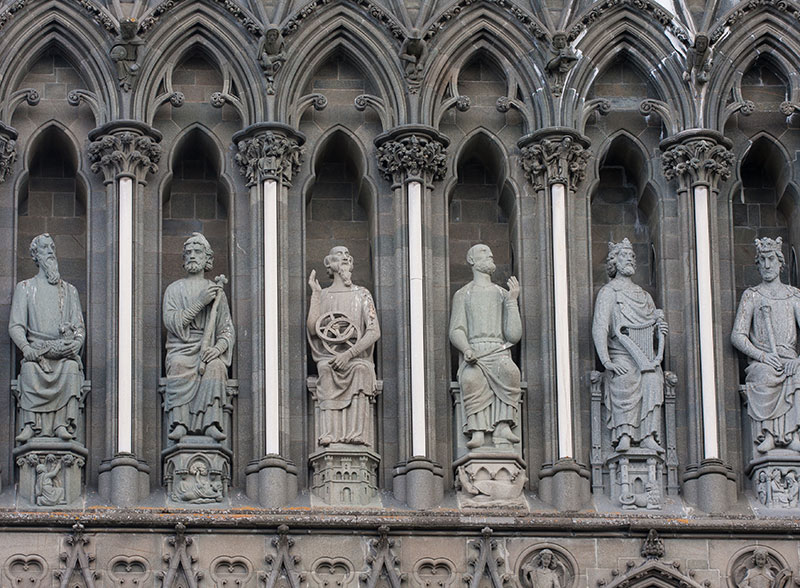
From 1905 to 1983, sculptors painstakingly restored the facade, creating a series of statues that depict historic and religious figures. This ambitious project remains Norway’s largest art restoration effort.
The sculptures are based on a mix of historical records, a 17th-century print, and creative interpretation, blending fact and imagination to bring the medieval facade back to life. The result is a breathtaking work of art that continues to inspire awe in visitors from around the world.
Facts about the Archbishop's Palace
Adjacent to the magnificent cathedral, the Archbishop’s Palace is one of Trondheim’s most historically significant landmarks. It has served many purposes over the centuries, and today it is a hub of cultural and historical exploration.
9. The Archbishop’s Palace has played a pivotal role in Norwegian history. Originally built as the residence of Norway's powerful archbishops during the Middle Ages, it was a symbol of the church's influence and authority.
Following the Reformation, the palace transitioned to secular uses, serving as a military barracks and administrative centre.
Today, it houses a museum that delves into the palace’s fascinating past, offering insights into its time as a residence, its connection to the cathedral, and its role in Norwegian history.
10. It's home to Norway's Royal Regalia. One of the palace’s most treasured features is the storage and display of Norway’s Royal Regalia. Visitors can see the exquisite crowns of the King and Queen of Norway, along with other ceremonial items, all meticulously crafted.
11. The courtyard hosts some of Trondheim's biggest concerts. The palace’s courtyard transforms into a spectacular open-air concert venue during Trondheim’s annual St. Olav’s Festival. This vibrant event celebrates the city’s patron saint with cultural performances, workshops, and music.
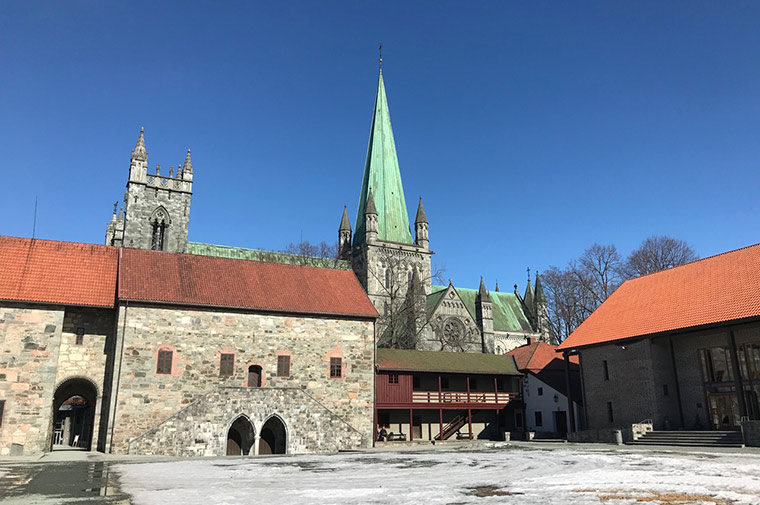
The courtyard’s historic atmosphere provides a stunning backdrop for performances by world-renowned artists such as Sting and Patti Smith. Whether you’re a music lover or a history enthusiast, attending a concert here is an unforgettable experience.
Facts about the Trondheim of today
Trondheim may be steeped in history, but it is also a forward-looking city that thrives on innovation, connectivity, and international collaboration. Here are some fascinating facts about Trondheim’s modern identity.
12. Trondheim is considered the technology capital of Norway. Trondheim has earned its reputation as the technology capital of Norway.
It is home to the prestigious Norwegian University of Science and Technology (NTNU), the largest university in the country, as well as SINTEF, one of Europe’s leading independent research organisations.
These institutions drive cutting-edge research in fields such as renewable energy, artificial intelligence, and robotics. Many innovations developed in Trondheim are spun off into successful companies that remain based in the city, fueling its vibrant startup scene.
The combination of a highly educated workforce, entrepreneurial spirit, and state-of-the-art facilities ensures Trondheim’s place at the forefront of technological development.
13. Trondheim has 13 sister cities. Trondheim’s commitment to fostering international relationships is reflected in its 13 sister city agreements.

These partnerships, which began in 1956, include Nordic neighbours like Odense (Denmark) and Gothenburg (Sweden) as well as more unexpected connections, such as Vallejo, California. These agreements encourage cultural, educational, and economic exchanges.
14. The city is not the regional capital. Despite being Trøndelag’s largest and most prominent city, Trondheim is not the administrative capital of the county. That honour belongs to Steinkjer, located about 120 km to the north.
This decision was made to avoid centralising administrative power and resources in one location, especially in such a geographically vast region. Of course, Trondheim remains the economic and cultural heart of Trøndelag, drawing people from across the region for work, education, and entertainment.
15. Trondheim is well connected by rail. Trondheim is a major hub in Norway’s rail network, offering a range of travel options that connect the city to the rest of the country and beyond. The Dovre Line provides a scenic route to Oslo, while the Røros Line offers an alternative path through charming rural landscapes.
The Nordland Line, often referred to as one of the most beautiful train journeys in Europe, extends all the way to Bodø in the Arctic Circle. For those seeking international travel, Trondheim’s rail connections extend into Sweden via Östersund.
The sporting side of Trondheim
Trondheim is not only a hub for history and technology but also a city with a proud sporting heritage. Its success in both winter and summer sports has cemented its reputation as a city that lives and breathes athletics.
16. Rosenborg are Norway's most successful football club. Rosenborg BK, Trondheim’s biggest football club, have been a dominant force in Norwegian football. With a record 26 league titles and 12 Norwegian Cup victories, the club’s achievements are unparalleled in the country.
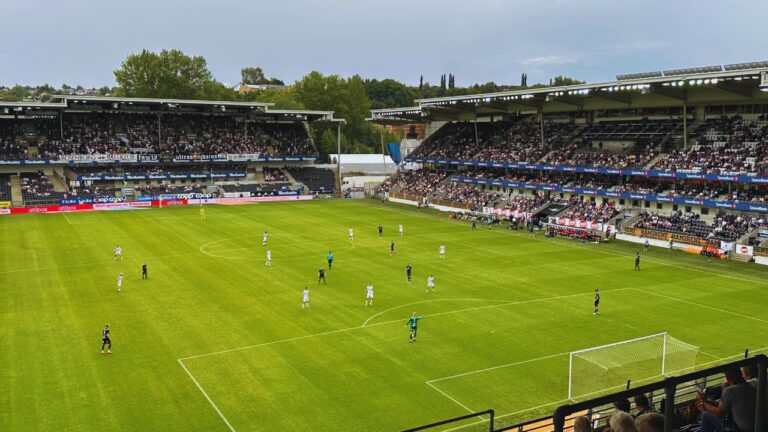
Rosenborg have also made their mark on the international stage, playing more games in European competitions than any other Norwegian team. The club’s success during the 1990s, particularly in the UEFA Champions League, brought Trondheim to the attention of football fans worldwide.
17. Lerkendal Stadium is Norway's biggest club stadium. Rosenborg’s home ground, Lerkendal Stadium, is the largest club stadium in Norway, boasting an all-seater capacity of just over 21,000. It's second in size only to Oslo’s Ullevaal Stadium, which hosts the national team and major finals.
18. The city is Norway's capital of cross-country skiing. When it comes to cross-country skiing, Trondheim and the surrounding Trøndelag region are in a league of their own. The area has produced some of Norway’s most celebrated Olympians, who have achieved international fame for their performances in this quintessentially Norwegian sport.
The region’s vast network of ski trails and its winter climate provide ideal conditions for training, even though many athletes train at higher altitudes elsewhere. Trondheim’s cross-country legacy continues to inspire future champions, maintaining the city’s reputation as a breeding ground for winter sports excellence.
19. Trondheim will host the Ski World Cup 2025. In 2025, Trondheim will take centre stage as it hosts the prestigious FIS Ski World Cup.
The event will bring the world’s top cross-country skiers to the city, showcasing its world-class facilities and strong sports heritage. As a proud hub of skiing excellence, Trondheim is sure to deliver an unforgettable experience for athletes and fans alike.
Other Trondheim Facts
20. Picturesque Bakklandet was nearly destroyed for a new highway. The charming neighbourhood of Bakklandet, with its colourful wooden houses and cobbled streets, is one of Trondheim’s most iconic areas.
However, in the 1960s, plans were made to demolish much of it to make way for a new highway. Fortunately, a passionate community movement rose up to protect Bakklandet’s unique character and historical significance.
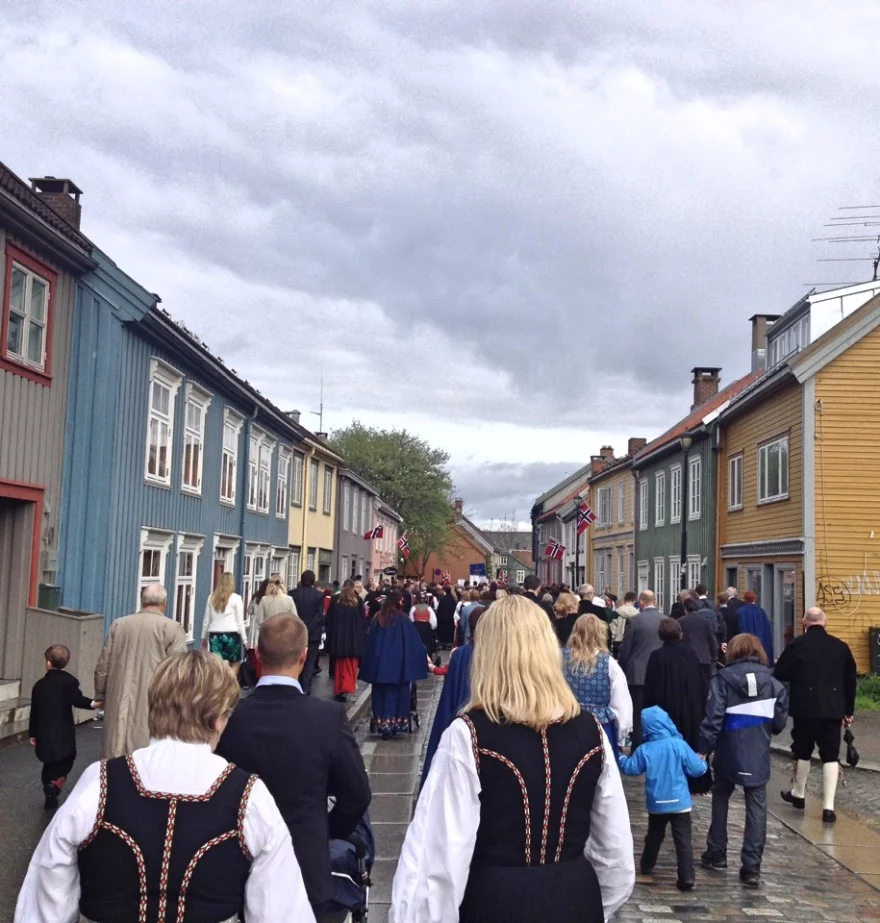
Thanks to their efforts, the neighbourhood was saved and is now a thriving area full of boutique shops, cosy cafes, and scenic walking paths along the Nidelva River.
21. Trondheim is home to Norway's oldest wooden building. The imposing Stiftsgården, built in 1778, is not only Norway’s oldest wooden building but also Scandinavia’s largest wooden palace.
This magnificent structure was originally commissioned by Cecilie Christine Schøller, a wealthy widow and prominent figure in Trondheim society. Designed in the late Baroque style, the palace reflects both the opulence of the era and Trondheim’s prominence as a thriving trade hub.
Today, Stiftsgården serves as the official royal residence in Trondheim, hosting members of the Norwegian royal family during their visits to the city. The palace has witnessed countless historic events, including royal ceremonies and state functions.
While much of the building remains off-limits to the public, guided tours allow visitors to explore parts of its grand interior, including ornately decorated rooms that provide a glimpse into 18th-century aristocratic life.
I hope you enjoyed these fun facts about my adopted home town. Trondheim’s unique mix of history, innovation, and culture offers something for everyone to enjoy.


My favourite city in Norway, originally from the NE of England I feel my ancestors were from here.
I believe that the cathedral organ has the largest pipe in the world. They do not play it very often, as they are afraid its vibrations may damage the wall structure. I believe it was called a 32′ bombard(height). I believe the diameter of the pipe was measured in feet. When we walked around it, I remember it being about 3′. Maybe you can check on it, and add it to your “fun facts about “Trondheim”. My choir was there in 1967
Now a retired United States Marine Corps officer, I reflect back on my cold weather training in Norway. I’ve also traveled to Norway on a cruise with my family, and will be doing so again this coming July. While I was privileged to visit and see many great sites: The Nidaros Cathedral in Trondheim, beautiful fjords, a park full of beautiful sculptures in Oslo, a recoved centuries-old Viking ship, Northern lights…and much more. I must say, though, the thing that impressed me the most were the Norwegian people I encountered during my visits: always helpful, pleasant and kind. I very much look forward to our visit in July.